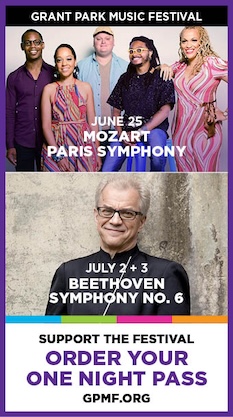La Caccina’s ambitious program of new vocal music explores the “Extraordinary Machine”

La Caccina kicked off its eleventh season this past weekend with a concert entitled “Extraordinary Machine.” The concert, which comprised the first half of a two-concert season called “Body+Spirit,” explored what it means to be a physical being in an increasingly digital world. The title relates to how we reconcile the ubiquitous “extraordinary machines” of digital technology with the “extraordinary machine” that is the human body.
There is no better musical way to examine this question than through choral singing, where not only is each singer their own unique machine, but they come together to form a collective instrument that is greater than the sum of its parts. La Caccina captured this idea through characteristically inventive programming that highlighted each of the nine singers and their unique vocal qualities, while also showcasing how seamlessly they can come together as one.
To add a visual component, the treble ensemble brought in projection designer Camilla Tassi, whose dynamic images matched the atmosphere and content of the musical selections. Though artistic projections have become relatively commonplace in classical concerts these days, Tassi’s projections were especially well done and not at all superfluous.
The lights of Gottlieb Hall at the Merit School of Music were turned all the way down, while fairy lights were strung artfully around the singers’ music stands. The animated images were then projected on the entire wall behind the singers. This setup created an immersive experience, though the darkness of the hall also meant it was impossible to read the program notes or texts during the performance. Fortunately, La Caccina’s diction was largely clear, and artistic director Carling FitzSimmons’ introductions gave important context, which aided one’s enjoyment and comprehension.
The first section, titled “Power Generator” was all about the human body as an organic machine. The most interesting piece in this section was Alice Ping Yee Ho’s “Begin,” which tells the story of Marilyn Bell, the first woman to swim across Lake Ontario. The piece incorporated numerous non-singing elements, such as “shh” sounds, whistles, clapping, and the tinkling of chimes to evoke the movement of the water.
Such an intricate piece emphasized the “machine-like” nature of the group, with each part moving independently but in complete coordination with the other parts, mostly achieved without the help of a conductor. The one downside was that the clapping, which grew in intensity as the piece became more dramatic, obscured the text.
The second section, titled “Perpetual Motion,” presented three working songs from around the world. Arguably the most memorable of the seven sections of the concert, it featured a charming Acadian French folksong about a cow (complete with spoon accompaniment); a popular folkloric lullaby originating from enslaved Africans living along the Colombia–Venezuela border; and an arrangement of Huddie Ledbetter’s “Bring Me Little Water, Sylvie,” which has roots in plantation songs and featured choreographed body percussion.
In a pleasant moment of textural variety, soprano Megan Fletcher lent the lullaby “Duerme Negrito” a gentle maternal tone with sweet vibrato that contrasted nicely with the tight harmonies of the accompanying voices. But it was here and in the Acadian folksong, “Marie Madeleine”—the only two foreign-language selections on the program—that not being able to read the translations was a detriment. The audience was unable to glean the funny story of the cow sending the narrator flying into a pile of dung in “Marie Madeleine” or fully comprehend the deep pathos of “Duerme Negrito,” though the singers did their best to convey the meanings in their performance.
This concert featured three professional premieres, two of which were commissioned by the ensemble. The first premiere was Jana Heckerman’s “To Spin the Web.” Though the piece had a lot of ideas, it was unified by the concept of voices interweaving, evocatively captured through aleatoric slides on the “n” of the word “spin.”
The two commissions were “Find the Light We Need” by Timothy C. Takach and “All Things Sublime and Colossal” by Ephraim Champion. Champion was this year’s Hearing in Color composer-in-residence—an organization that La Caccina has partnered with for two years. The goal is to give composers from traditionally underrepresented groups in classical music experience writing for treble ensembles.
Champion came to this assignment as an accomplished horn player but with little experience writing for the voice. In her introduction, FitzSimmons explained how the process was one of collaboration; Champion came with many ideas and a strong sense of what he wanted to do, and the ensemble helped him hone those ideas into a performable piece.
The resulting work was quite dense with many different effects and textures. It was the most challenging piece on the program, stretching the ensemble in tessitura and featuring solo moments for each of the singers. The transitions and the more exposed sections were slightly shaky in comparison to the huge stacked chords that buzzed in the air. Over all, the piece was distinctive and showed great promise for the young composer.
But the program was not all cluster chords and intricate textures. One of the most stunning moments came at the beginning of the second half with “Beata viscera” by medieval composer Pérotin. La Caccina’s blend in the monophonic Latin sacred song was impeccable, the nine distinct voices, from the earthy low altos to the ethereal high sopranos, coming together as one extraordinary machine.
La Caccina’s second and final program of the season will be “Clear Blue Morning” on May 19 and 20, 2023. lacaccina.org
Posted in Performances

